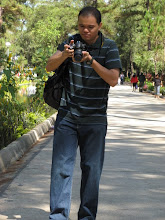Wednesday Liturgy: Kneeling at the Final Prayer
ROME, JUNE 28, 2011 (Zenit.or (http://www.zenit.org).- Answered by Legionary of Christ Father Edward McNamara, professor of liturgy at the Regina Apostolorum university.
Q: At the final prayer of Mass, my parish priest stands and the entire congregation immediately kneels as he asks us to "Bow your heads and pray." He then prays the prayer, gives the blessing, and dismisses us. Notices are given just before he prays. Then we all stand to sing the final hymn. Is it optional to kneel or stand for the final prayer of the Mass? -- R.D., Manchester, England
A: The usual procedure for the end of Mass is the following. After communion, the celebrant sits in silent thanksgiving while the rest of the faithful either sit or kneel as they prefer. A meditative song of thanksgiving may also take place during this time.
When thanksgiving is over, all stand and the priest sings or says the closing prayer of Mass to which the faithful respond Amen.
If there are any announcements to be made, they are delivered after this prayer. If necessary, the people may be invited to sit.
If the priest imparts the simple blessings ("The Lord be with you May almighty God bless you "), then the assembly remains standing for the blessing, dismissal and closing hymn.
If the prayer over the people or a solemn blessing is used, then the deacon, or in his absence the priest, says to the people: "Bow your heads and pray for God's blessing." The people remain with heads bowed while the priest, his hands extended over the assembly, sings or says the prayer.
After each formula the people respond Amen. Concluding the prayer, the priest says, "May almighty God bless you ...."
There is nothing in the rubrics to suggest that the people should kneel to receive the priest's blessing, although this might well be a legitimate custom in some places as a substitute for bowing.
The solemn blessings and prayer over the people are generally used on solemnities and other important occasions. They may also be used on Sundays especially during the major liturgical seasons such as Lent and Easter.
One of the novelties that people will find in the new translation of the Roman Missal is that, beginning with Lent 2012, the priest will have the option of proclaiming a different prayer over the people for each day of the penitential season. These traditional prayers had been present in the missal before the conciliar reform but were dropped from the missal issued by Pope Paul VI. They were restored in the third Latin typical edition in 2001.
The principal difference between the solemn blessing and the prayer over the people is that three prayers are usually used for the solemn blessing, while just one is used for the prayer over the people. Another difference is literary style. The blessing addresses the assembly and invokes God's favor upon it. The prayer over the people addresses God directly, asking for his grace.
For example, one blessing formula for Ascension proclaims: "You believe that Jesus has taken his seat in majesty at the right hand of the Father. May you have the joy of experiencing that he is also with you at the end of time, according to his promise."
One of the restored prayers over the people that will be heard next year is that of the First Sunday of Lent: "May bountiful blessing, O Lord, we pray, come down upon your people, that hope may grow in tribulation, virtue be strengthened in temptation, and eternal redemption be assured. Through Christ our Lord."



0 Comments:
Post a Comment
<< Home